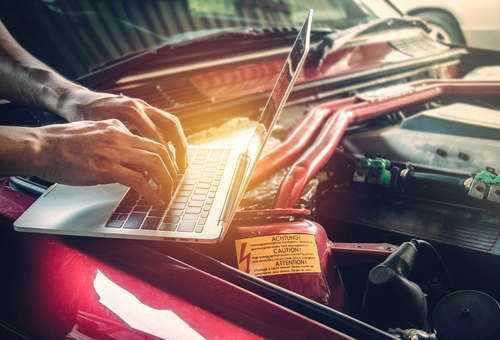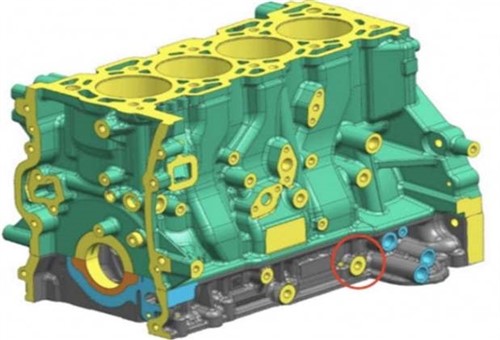
We are now well into the new year, and picking up speed towards the implementation of The Mandatory Data Sharing Law, or to give its proper name, The Motor Vehicle Service and Repair Information Sharing Scheme that will come into effect on 1 July 2022, if all goes to plan, that is.
We have written about this law before. In several articles, we have explored the hidden and actual costs of actually using this law to our customers' advantage, as well as the effort involved in managing, curating, and storing the mountains of data that working on new vehicles at the dealership level generates. However, some things remain unknown, such as, for instance, how much vehicle manufacturers will charge us for different categories of information, and how the various provisions of this law will play out in the real world.
Nonetheless, we know what we, as the independent repair industry want. We want unfettered access to OEM-level repair and service information, even if we have to pay for it, although many of us in the independent repair industry is not nearly ready to use the information we are ready to pay for. There is a very good chance that some of us have not (yet) upgraded our scan tools and other test equipment, and/or that we have not (yet) invested in OEM-level diagnostic software or ADAS calibration equipment.
This article is not about that, though. This article is about expectations- both our own and those of our customers. For instance, as independent mechanics, we may have expectations of being run off our feet with new business after July of this year, while our customers may be expecting to receive huge discounts on the OEM-level repair work we will do for them in our independent workshops.
When one views these opposing sets of expectations objectively, it is easy to see that there is lots of room for miscommunication and misunderstandings to arise. For many people, car maintenance is a grudge expense, so many people might be unhappy to find that there may not be that much difference between what they paid a dealership for a particular service or procedure, and what they now have to pay an independent workshop for the same service or procedure, after all.
Similarly, for us as mechanics, much of the profit new business might bring could be absorbed by the cost of new equipment, more training, the high cost of subscriptions to multiple online resources, yet more training, and increased advertising costs to attract the new business, in the first place, which begs the question of-
We can’t always know the minds of our customers, but we can be sure of one thing. For many people, their cars are their most prized possessions after their homes, which fact explains why they don’t always allow or trust just anybody to work on them. Ergo, that’s why your customers are your customers, and not somebody else’s.
This general principle applies in equal measure to all business establishments in the independent car repair industry: from large, multi-million dollar dealerships and franchises, to small, community-based workshops that run two or maybe three bays on a shoestring budget, to one-person mobile operators that serve remote and outlying areas. So what does this have to do with The Motor Vehicle Service and Repair Information Sharing Scheme? Simply this-
While there is no close analogue to the/our Motor Vehicle Service and Repair Information Sharing Scheme in operation anywhere in the world, the version of his type of legislation that is currently in operation in a handful of jurisdictions in the US and the EU might have some relevance.
For instance, when the state of Massachusetts introduced the right to repair law in 2012/13, it took many months before the overall independent repair industry there began to notice a small increase in the number of independent workshops working on vehicles that were under warranty.
A significant move from dealerships to independent workshops did not happen for several years, and many researchers there attributed the lack of uptake to many different reasons. Nonetheless, the proverbial bottom line was that the motoring public was acutely aware of the fact that while the average independent workshop now had access to OEM-level service and repair information, they (likely) did not have the required knowledge, diagnostic skills, equipment, and expertise to apply the newly available repair and service information to their new vehicles.
In the American consumers’ experience, this was particularly true of ADAS and telematics systems that are now developing and improving at a rate that makes it difficult even for dealerships to keep up with developments, and there is no reason to believe that things will be different for us here in Australia.
Of course, we cannot and should not let the American experience dictate what we do or don’t do, since the pool of new vehicles in Australia represents a huge pool of potential new business opportunities for the independent repair industry. We can take advantage of at least some of these opportunities, or we can let them go to our competitors.
However, exactly how the implementation of the Motor Vehicle Service and Repair Information Sharing Scheme impacts individual independent shops will largely depend on how workshop owners/managers approach the myriad challenges this law brings, but how do we, who are not in a position to take management or executive decisions, approach the new law?
For us, it’s not so much about the law itself as it will be about dealing with parts, components, systems, and procedures that we have often not seen or dealt with before. Of course, this is not the same as saying that we should shy away from these challenges: we absolutely should tackle them head-on, but the fact is that doing diagnostics at OEM or dealership level is an altogether different beast from the one we are used to in the independent repair industry.
As with anything else, we will each find our own way of doing things, but this writer would like to suggest an approach or strategy that has worked for him when he worked in a foreign market for a few years. It was a really simple strategy that involved nothing more than-

There are few things in the life of any mechanic as harrowing as being presented with a problem on a vehicle he has never seen before. We can skip over most of the details of the time this writer spent working on another continent, but suffice to say that the market he found himself in was, and still is, flooded with not only Chinese-made vehicles but with Chinese knock-offs of mainly Korean cars.
While Chinese brands have an established presence in Australia, these brands account for only about 10 per cent (or less) of the national car parc, but in the foreign market we are talking about here, Chinese-made vehicles accounted for at least 35 per cent of the car parc. Worse, while these vehicles were sometimes sold through major dealership networks in joint venture-type arrangements, many Chinese brands were sold through Chinese-controlled dealer networks that made no technical or service information available to the independent repair industry. In practice, this meant that the chances of fixing some of these cars in the independent repair environment were often directly proportional to the amount of technical information that was available online, which was woefully inadequate to diagnose even relatively simple issues, more often than not.
So what is the point of all or any of the above?
You may well ask because in the Australian context, "taking the easy way out" means leveraging the fact that regardless of where any given vehicle is made, the Motor Vehicle Service and Repair Information Sharing Scheme will compel dealers of that vehicle to make all repair, service, and technical information that applies to that vehicle available to independent repairers in Australia.
We already know that, but if you have not had much exposure to vehicles that are covered by warranty conditions, you may not fully appreciate how often new model lines suffer from so-called "pattern failures". We in the independent repair industry don't see these kinds of failures often because they are corrected by either massive recalls or safety campaigns, or they are resolved on an individual vehicle basis while the vehicle is still under warranty.
Thus, by the time we see a vehicle after it had come out of its warranty period, the dealers have already resolved most, if not all of its acute or glaring faults, defects, and shortcomings, and it is this type of work we should target because it can be highly profitable.
Now, the trouble with the Motor Vehicle Service and Repair Information Sharing Scheme is that we don’t know how all of its provisions will work or play out in the real world, and especially concerning warranty claims. However, we can be fairly certain that vehicle manufacturers will almost certainly not contact each of the thousands of independent workshops in the country with the latest TSB's, software updates, revised service procedures, and the likes that apply to their products regularly- if at all.
So, we take the easy way out, by accessing the TSBs and other service bulletins that manufacturers currently do not share with the independent repair industry. To many readers, this might sound rather silly, since many of us already use TSB’s to diagnose and resolve problems on cars that are out of warranty, but many readers will be absolutely amazed not only by-
- but also by the guided pin-point tests, programming tips and procedures, helpful hints, as well as known-good (and known bad) waveforms that are often included in many TSB’s.
The bad news is, however, that none of this information will be available to any of us for free. However, what would you rather do; spend some money to obtain the information, or spend hours trying to figure out what to test next in say, a highly complex telematics system that suddenly stopped communicating, or perhaps FlexRay-based serial communications system that unexpectedly immobilized a customer’s new vehicle?
Issues like the above example(s) might not cross your path every day, but once the Motor Vehicle Service and Repair Information Sharing Scheme comes into effect, there is a very good chance that you might begin to see these kinds of issues regularly- especially if you work in a large workshop.
Therefore, looking for, and paying for relevant service and repair information is not only taking the easy way out; it is often the only way to avoid diagnostic nightmares that often have the potential to not only produce unhappy customers, but also severe reputational harm to both yourself and your employer.
We could say a lot more about TSB’s and how they can offer you a way out of potentially sticky diagnostic situations, but it might be more instructive to look at a few actual problems on vehicles that will soon come out of warranty. If you were faced with these vehicles and their problem you may very well have found the problem without a TSB, but how long would it have taken you? So, to illustrate the advantages of taking the easy way out, let us look at a-
The issue described below is addressed by TSB -0042-18 – “Water Entry on RH Front Floor Area”
In this concern, many 2018 Camry and Camry Hybrid models may develop a musty smell as a result of water ingress, which affects the right-hand side floor area.
Now, one would assume that the windscreen leaks, but according to the relevant TSB, the problem involves missing and/or misapplied body sealer around the bonnet hinge area on the right-hand side. However, while one leak site problem could be solved simply by applying sealant around one seam, fixing the other possible leak site involves using a borescope to locate the exact site of the leak.
These two procedures are labelled "A" and “B”, respectively, and the TSB provides detailed instructions both on how to fix the problem, and to verify the repair.
One other Camry issue is described by TSB-0016-20 – Fuel Filler Door Difficult to Open
This concern involves difficulty in opening the fuel filler door on many Camry models produced in the USA. In this case, the spring that was supposed to push the fuel filler door open when the button in the car was pressed did not have sufficient strength, and/or travel to push the door open.
This problem could be fixed by replacing the spring with an updated version- part number 77360-35040. As with other TSB’s, this one also provided full details on how to accomplish and verify the repair.
In this example, the issue concerns DTC P0747 –“Pressure Control Solenoid "A" Stuck On”, and it is addressed by TSB-PIP5697E
In this concern, the code sets when the engine is switched off while the transmission is in either Park or Neutral, even though there are no mechanical or hydraulic issues present on the transmission.
On the face of it, one would expect to see issues with the control solenoid “A”, or with its control/signal circuit(s). However, The TSB states that this code sets when the BCM does not supply a current (that is within 4 volts of battery voltage) to the TCM/ECM for 15 consecutive seconds after the ignition is switched “OFF”. It turns out that the TCM/ECM modules require this voltage for at least 15 consecutive seconds to complete a series of self-tests. Thus, if the current is interrupted, the data the TCM/ECM modules will “see” at the next start cycle will be the engine speed during cranking, which is the trigger that sets DTC P0747 in the TCM. In this case, the trouble code involves the status of control solenoid “A”, as opposed to a failure or malfunction of the solenoid, and then only in a roundabout sort of way.
Instructions on how to resolve the issue are provided and among many other things, it includes this advice- “…inspect the TCM and ECM connector for possible terminal connection concern, and for possible open in circuit 5985 to the TCM and ECM. If no fault is found with circuit 5985, and/or no fault is found for a terminal connection concern at the BCM/ECM/TCM connectors, then replace and re-program the BCM.”(Italics added)
Oil leaks can be the very devil to find, but on this Holden Commodore model, TSB-18-NA-201 addresses an oil leak that is the result of porosity in the engine block casting. Consider the image below-

In this image, the site of porosity is indicated by the red circle, and given the lack of space and workroom around this engine, it could be an extremely challenging affair to find this oil leak if it were not for a TSB that addresses this specific issue.
This TSB also provides a very specific cure; the application of Loctite PST 565 (or an exact equivalent) to the middle part of the bolt that fits into this hole. In addition, the sealant must be allowed to cure for a minimum of 12 hours before you start the engine because failure to observe the recommended curing time will cause the bolt hole to leak again, which leaves us with this-
Would you have found the example issues we used here in a reasonable time without the help of a TSB? Sure, most of us would have found the problem eventually, but what does one tell a customer who brought his warrantied car to you for the first time, instead of taking it to a dealership if the process of finding the trouble takes two days?
OK, so few issues take two days to diagnose, but that is beside the point; the point is that for many years we have been telling the public that we can do everything dealerships do. Therefore, if we have to take the easy way out and use TSB’s extensively to prove that we can do what dealerships do, then that is what we must do to make the Motor Vehicle Service and Repair Information Sharing Scheme work for both us and the public, who, it must be said, has certain expectations we need to satisfy.